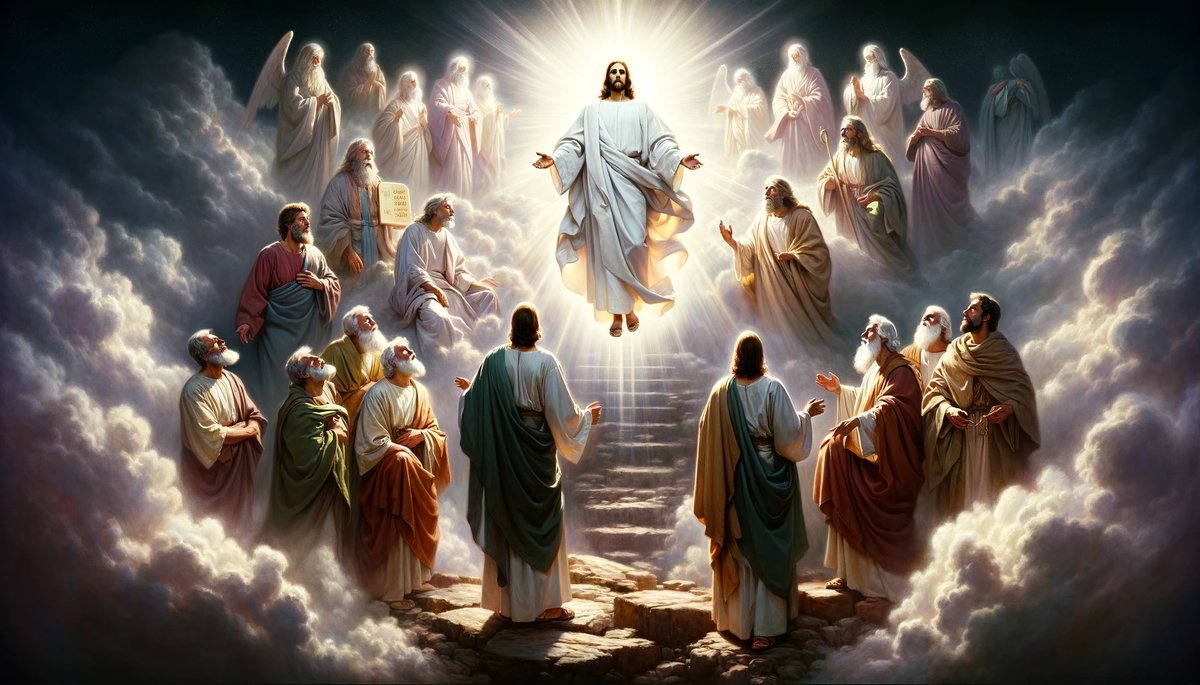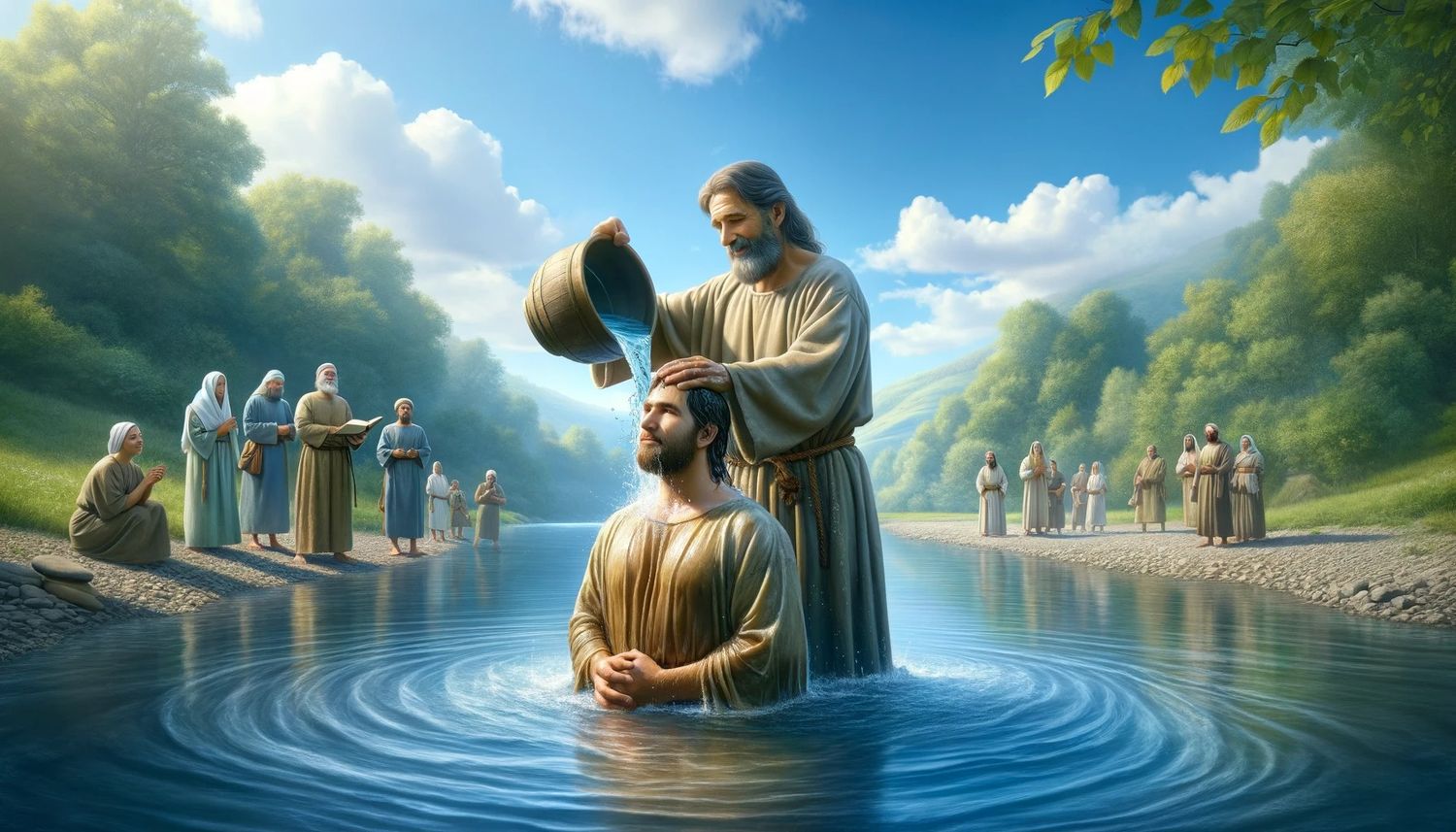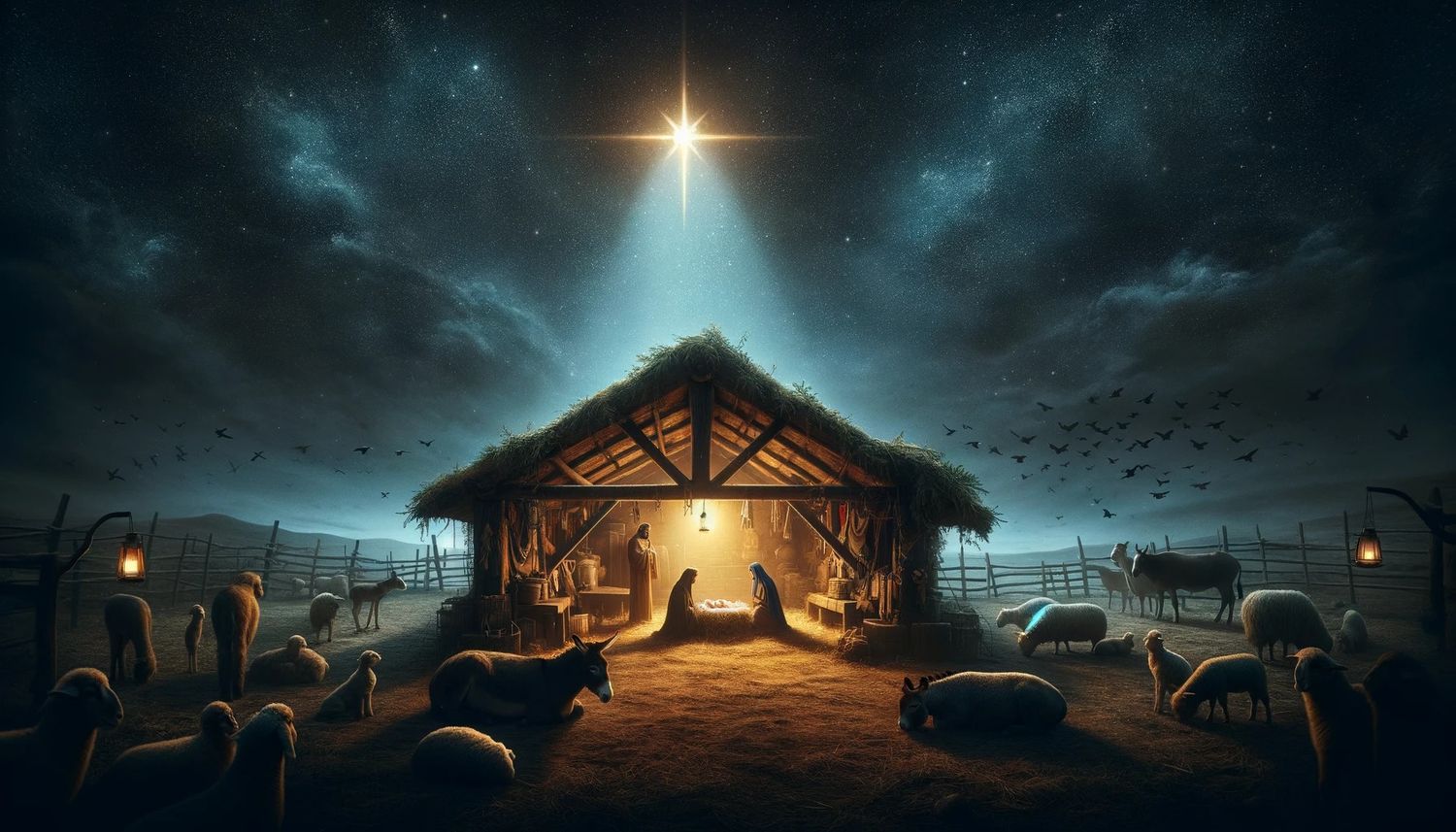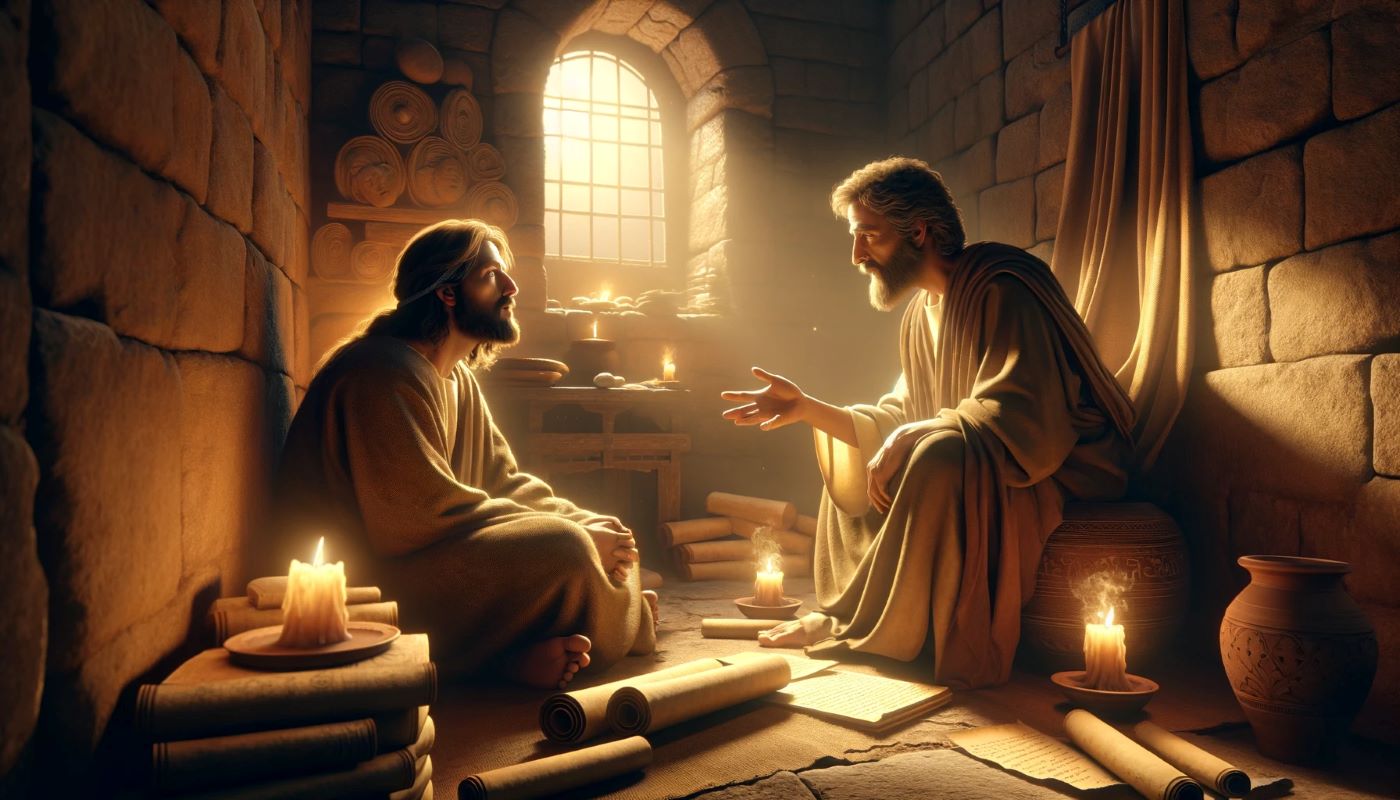Home>Christian Videos>Bible Stories>Which Gospels Have The Transfiguration


Bible Stories
Which Gospels Have The Transfiguration
Published: March 6, 2024
Ericka Andersen, an editor at Christian.net, expertly merges digital strategy with content creation, focusing on faith and societal issues. Her communication skills enhance the platform's engaging narratives, fostering meaningful dialogue on belief's impact on society.
Discover which Gospels feature the Transfiguration and delve into this powerful event with our collection of Bible stories. Explore the significance and meaning of this transformative moment in Christian history.
(Many of the links in this article redirect to a specific reviewed product. Your purchase of these products through affiliate links helps to generate commission for Christian.net, at no extra cost. Learn more)
Table of Contents
Introduction
The Transfiguration is a significant event in the New Testament where Jesus is transfigured and becomes radiant in glory upon a mountain. This event is pivotal in the life of Jesus and is recorded in the synoptic Gospels, namely Matthew, Mark, and Luke. However, the Transfiguration is not mentioned in the Gospel of John. In this article, we will explore which Gospels contain the account of the Transfiguration and delve into the unique perspectives each Gospel offers on this extraordinary event.
Read more: Which Apostles Witnessed The Transfiguration
The Transfiguration in the Gospel of Matthew
The Gospel of Matthew provides a detailed account of the Transfiguration, which occurs in Matthew 17:1-9. In this narrative, Jesus takes Peter, James, and John up a high mountain, where He is transfigured before them. His face shines like the sun, and His clothes become as white as light. Suddenly, Moses and Elijah appear, talking with Jesus. This extraordinary event signifies the fulfillment of the Law and the Prophets in Jesus, as represented by the presence of Moses and Elijah.
Peter, in his awe and reverence, suggests building three shelters for Jesus, Moses, and Elijah. However, a bright cloud envelops them, and a voice from the cloud declares, "This is my Son, whom I love; with him I am well pleased. Listen to him!" This divine affirmation echoes the similar declaration at Jesus' baptism, emphasizing His divine sonship and authority. The disciples, overwhelmed by the experience, fall facedown in fear, but Jesus reassures them and instructs them not to tell anyone about the vision until after His resurrection.
The Gospel of Matthew's account of the Transfiguration emphasizes the divine nature of Jesus and His fulfillment of the Old Testament prophecies. It also highlights the significance of listening to Jesus as the ultimate authority. This event serves as a pivotal moment in Jesus' ministry, affirming His identity and preparing the disciples for the challenges ahead.
The Transfiguration in Matthew offers a unique perspective on the glory and divinity of Jesus, setting the stage for the culmination of His earthly ministry and the fulfillment of God's redemptive plan.
Now, let's explore how the Transfiguration is depicted in the Gospel of Mark.
The Transfiguration in the Gospel of Mark
The Gospel of Mark presents the Transfiguration in Mark 9:2-8. In this account, Jesus takes Peter, James, and John with Him up a high mountain, where He is transfigured before them. His clothes become dazzling white, far whiter than any earthly bleach could make them. Then, Elijah and Moses appear, conversing with Jesus. This manifestation of Moses and Elijah signifies the continuity between the Law, the Prophets, and the person of Jesus, affirming His fulfillment of the Old Testament prophecies and His authority as the Son of God.
Peter, in his astonishment, suggests building shelters for Jesus, Moses, and Elijah. However, a cloud overshadows them, and a voice from the cloud says, "This is my Son, whom I love. Listen to him!" This divine declaration echoes the affirmation at Jesus' baptism and underscores the authority of Jesus as the beloved Son of God. The disciples are filled with awe and fear, and as they descend the mountain, Jesus instructs them not to tell anyone about the vision until after His resurrection.
The Gospel of Mark's account of the Transfiguration emphasizes the divine nature and authority of Jesus, reinforcing His identity as the fulfillment of the Law and the Prophets. This extraordinary event serves to strengthen the disciples' faith and understanding of Jesus' true nature, preparing them for the challenges that lie ahead in His ministry.
The Transfiguration in Mark provides a unique perspective on the divine glory of Jesus and His continuity with the Old Testament, establishing His authority and fulfilling the Messianic expectations of the Jewish scriptures.
The Transfiguration in the Gospel of Luke
The Gospel of Luke records the Transfiguration in Luke 9:28-36. In this account, Jesus takes Peter, James, and John up the mountain to pray. As He prays, the appearance of His face changes, and His clothes become as bright as a flash of lightning. This transformation signifies the divine radiance and glory of Jesus, a manifestation of His true nature as the Son of God.
During the Transfiguration, Moses and Elijah appear in glorious splendor, speaking with Jesus about His departure, which He was about to bring to fulfillment in Jerusalem. The presence of Moses and Elijah underscores the continuity between the Old Testament figures and Jesus, affirming His role as the fulfillment of the Law and the Prophets. This interaction also alludes to the significance of Jesus' impending sacrificial death and resurrection, which would bring about the ultimate fulfillment of God's redemptive plan.
As Peter, James, and John are enveloped in the cloud, a voice from the cloud declares, "This is my Son, whom I have chosen; listen to him." This divine affirmation echoes the declarations at Jesus' baptism and emphasizes the authority and divine sonship of Jesus. The disciples are filled with awe and fear, and as they descend the mountain, Jesus instructs them not to tell anyone about what they had seen until after His resurrection.
The Gospel of Luke's account of the Transfiguration highlights the divine radiance and authority of Jesus, emphasizing His role as the fulfillment of the Old Testament prophecies and the pivotal nature of His impending sacrifice. This extraordinary event serves to strengthen the disciples' understanding of Jesus' identity and mission, preparing them for the challenges they would face in the days to come.
The Transfiguration in Luke provides a unique perspective on the divine glory and significance of Jesus, emphasizing His continuity with the Old Testament and His pivotal role in bringing about God's redemptive plan for humanity.
The Transfiguration in the Gospel of John
The Gospel of John, unlike the synoptic Gospels, does not contain an explicit account of the Transfiguration. However, this does not diminish the significance of the Transfiguration in the overall narrative of Jesus' ministry and identity. While the event itself is not described in John's Gospel, the themes and theological implications of the Transfiguration are woven throughout the Gospel in different ways.
In John's Gospel, the concept of Jesus' glory is a recurring theme. Instead of a specific Transfiguration event, the Gospel of John emphasizes Jesus' glory through His miraculous signs, teachings, and ultimately, His crucifixion and resurrection. The Gospel presents Jesus as the Word made flesh, the light of the world, and the manifestation of God's glory among humanity.
The absence of a direct Transfiguration account in the Gospel of John does not diminish the theological significance of Jesus' divine nature and glory. Instead, John's Gospel presents a continuous revelation of Jesus' glory through His words and actions, culminating in His sacrificial death and triumphant resurrection.
While the Transfiguration is not explicitly narrated in the Gospel of John, the themes of divine glory, the revelation of Jesus' true nature, and His fulfillment of God's redemptive plan are intricately woven into the fabric of the Gospel. John's Gospel presents a unique perspective on the significance of Jesus' identity and mission, emphasizing His divine nature and the transformative impact of His life, death, and resurrection.
The Gospel of John may not contain a specific Transfiguration account, but it richly portrays the glory and divinity of Jesus through its unique theological lens, offering profound insights into the nature of Jesus' identity and the fulfillment of God's purpose through Him.
Read more: Parable Of The Sower: In Which Gospels?
Conclusion
In conclusion, the Transfiguration is a profound and pivotal event in the life of Jesus, as depicted in the synoptic Gospels of Matthew, Mark, and Luke. Each Gospel provides a unique perspective on this extraordinary event, emphasizing the divine nature, authority, and fulfillment of Old Testament prophecies in Jesus. While the Transfiguration is not explicitly narrated in the Gospel of John, the themes of divine glory and the revelation of Jesus' true nature are intricately woven into the narrative, presenting a continuous revelation of Jesus' identity and mission. The Transfiguration serves as a powerful affirmation of Jesus' divine sonship and authority, preparing the disciples for the challenges ahead and pointing towards the fulfillment of God's redemptive plan through Jesus' sacrificial death and triumphant resurrection. The diverse accounts of the Transfiguration in the Gospels offer rich insights into the significance of Jesus' identity, mission, and the continuity between the Old Testament and the New Testament, providing a profound foundation for understanding the theological implications of this extraordinary event.














